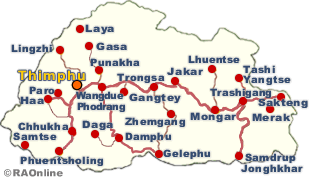 |
Bhutan Health |
 |
Bhutan Information |
|
|
 |
| Efforts to contain malaria |
 |
In Bhutan registered decreases in the incidence of confirmed malaria cases of 75% or more between 2000 and 2012. Bhutan is in the pre-elimination phase. In Bhutan 10% of the population are living at high risk.
The reported malaria mortality rate fell by 75%an more inBhutan between 2000 and 2012. |
|
 |
Malaria is a preventable and treatable mosquito-borne disease, whose main victims are children under five years of age in Africa.
The World Malaria Report 2012 summarizes data received from 104 malaria-endemic countries and territories for 2011. Ninety-nine of these countries had on-going malaria transmission.
According to the latest WHO estimates, there were about 219 million cases of malaria in 2010 and an estimated 660 000 deaths. Africa is the most affected continent: about 90% of all malaria deaths occur there.
Between 2000 and 2010, malaria mortality rates fell by 26% around the world. In the WHO African Region the decrease was 33%. During this period, an estimated 1.1 million malaria deaths were averted globally, primarily as a result of a scale-up of interventions.
Disease burden
Malaria remains inextricably linked with poverty. The highest malaria mortality rates are being seen in countries that have the highest rates of extreme poverty (proportion of population living on less than US$ 1.25 per day).
International targets for reducing malaria cases and deaths will not be attained unless considerable progress can be made in the 17 most affected countries, which account for an estimated 80% of malaria cases.
Drug and insecticide resistance
Antimalarial drug resistance is a major concern for the global effort to control malaria. P. falciparum resistance to artemisinins has been detected in four countries in South East Asia: in Cambodia, Myanmar, Thailand and Viet Nam. There is an urgent need to expand containment efforts in affected countries. For now, ACTs remain highly effective in almost all settings, so long as the partner drug in the combination is locally effective.
Mosquito resistance to at least one insecticide used for malaria control has been identified in 64 countries around the world. In May 2012, WHO and the Roll Back Malaria Partnership released the Global plan for insecticide resistance management in malaria vectors, a five-pillar strategy for managing the threat of insecticide resistance.
| Source: WHO, world malaria report 2013 |
 |
| Links |
 |
 |
 |
External
links |
|



